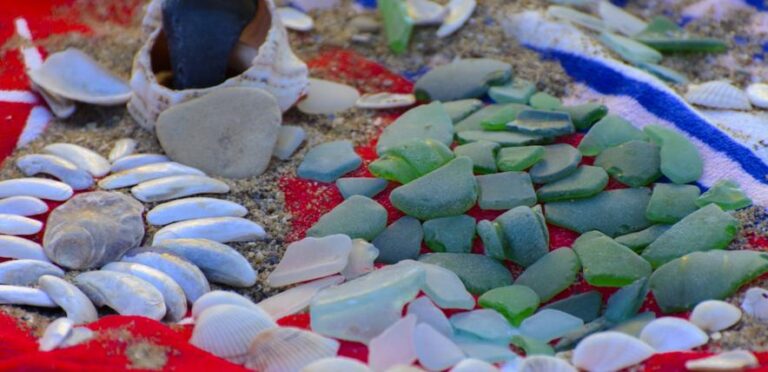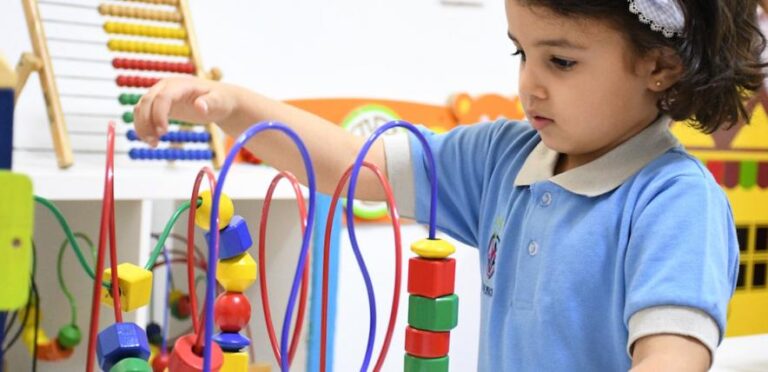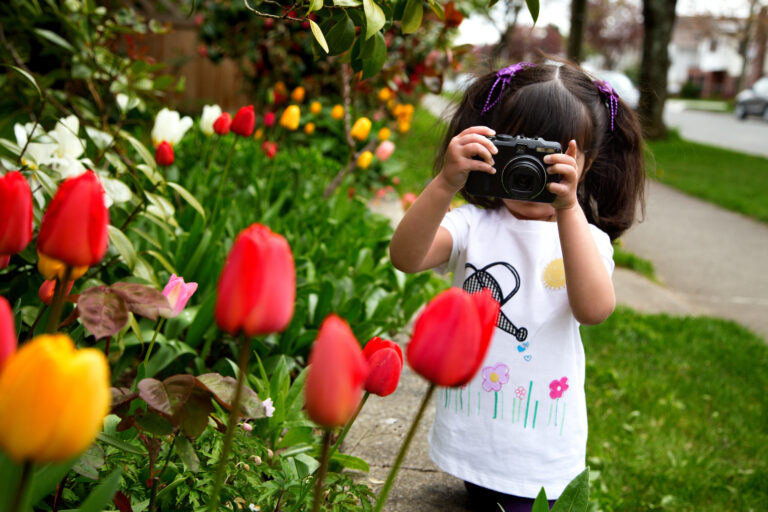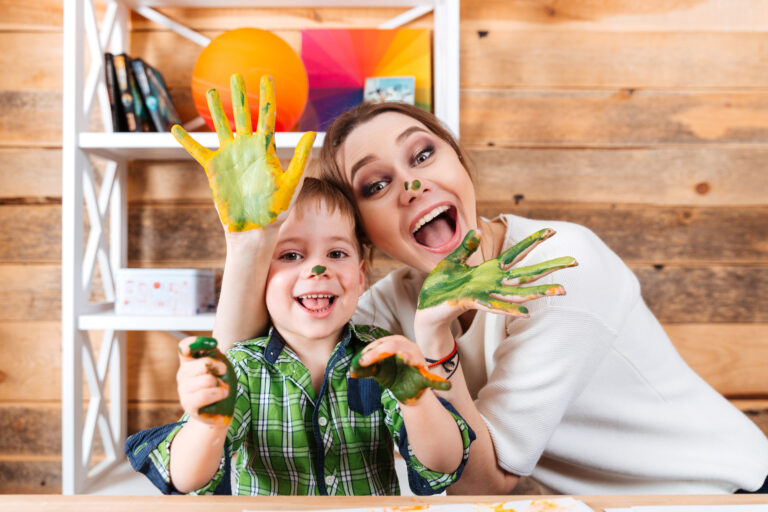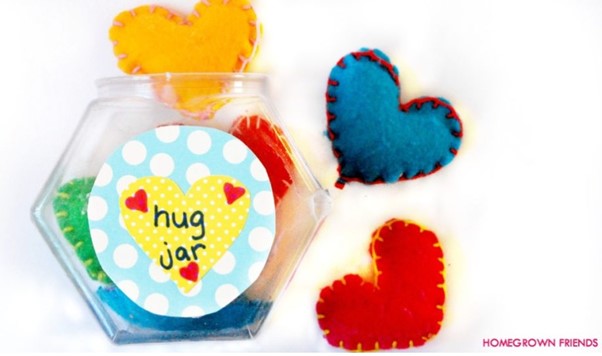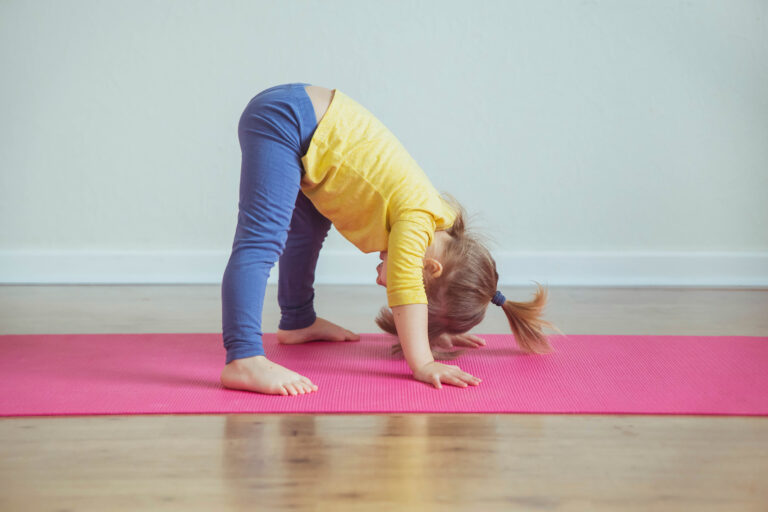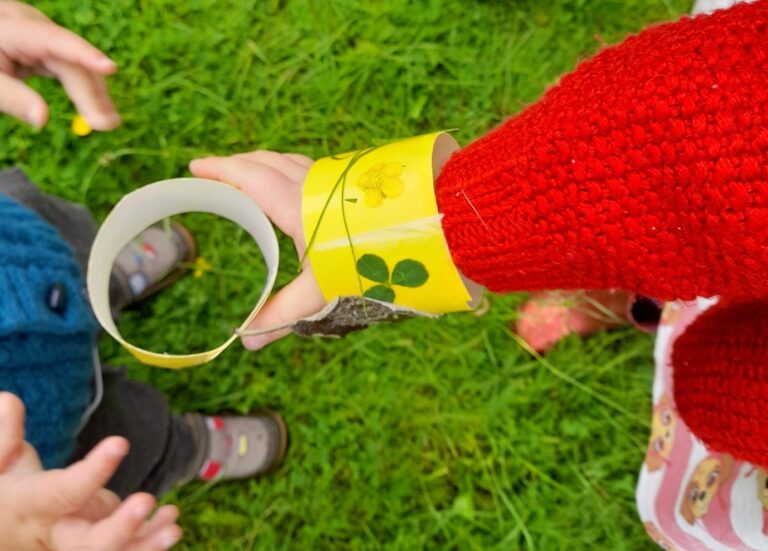My son’s ‘tinkering box’, made up of cotton reels; interesting stones; small sticks; a conker; string and a few pieces of metal, was by far his most interesting ‘toy’ at the age of three, when his Grandad passed it on to him.
He’d delight at the thought of playing with this special box of delights which were housed in a recycled circular sweet box, with a ribbon at the top that made it easy to open.
On the front of it was a picture of him and his grandad, which made the prospect even more special, especially as his very elderly grandad was an inventor.
He’d spend hours playing with this box, carefully opening it and taking out the contents; sorting through the different items, grouping and re-grouping them.
Pathways were made out of string and cotton reels became vehicles; sticks were lined up and some were stuck into Blue Tack to become traffic lights.
Exploring the every day to empower inventiveness
Exploring real, everyday materials like the above, which can be played with in an open-ended way, is known as Loose Parts Play.
The theory of loose parts was coined by architect Simon Nicholson in 1971, who argued that loose parts in our environment help empower our creativity and inventiveness.
Unlike a plastic Batman Cave, for example, which has a pre-defined play purpose, loose parts materials promote imagination, creative thinking and physical dexterity.
They can include man-made and natural resources and can be large or small scale, such as stones, sticks, cones, shells, logs, planks, crates, tyres, cable drum, pipes, ropes, tubes and more.
Many education approaches such as Montessori and the Steiner Waldorf system advocate the need for real experiences in order to acquire life skills and playing with a variety of loose parts assists with these approaches.
Following on from my son’s interest in loose parts play, I extended this to outdoors, in the garden, but first, alighted his interest by taking him to the world’s biggest playground for loose parts: the beach.
Outdoor ideas for loose parts play
With summer on the way, outdoors is a great place to encourage your child to get closer with nature and at the same time explore natural materials found in the environment or some man-made loose parts that you can add to the mix.
The beach
The beach is a perfect example of a loose parts environment because it has plenty of moveable and adaptable materials, such as sand, water, rocks and shells.
If you’ve ever taken your child to the beach, you will notice that’s it’s one giant playground of possibilities, giving them endless opportunities to use their imagination to build dams; sandcastles; hunt for treasure; explore sea creatures in rock pools or just clamber on the rocks.
Here, your child can tinker until their heart’s content. But what’s the best way to enjoy this with your child? And how can you support them to make the most of this stimulating environment?
* Encourage them to use their senses. Stroll along the beach and listen to the sound of the waves crashing, or gently cascading into the shore. Collect shells or interesting stones together. Touch the seaweed and breathe in the smells of the seaside. Feel the sand under your feet, squishing beneath your toes.
* Bring along buckets, spades and a fishing net. This is useful for collecting natural materials and fishing in rock pools.
* Once they are used to the environment, they may gravitate to a certain area. Be led by your child. They may be content to fill up their bucket with sand and then empty it in a repeated fashion or to throw stones into a rock pool for a sustained period of time.
If you notice this form of repetitive behaviour, where your child is engrossed in an activity, give them some space to let them explore it. They are likely to be demonstrating the transportation Schema whereby they enjoy carrying or moving items from one place to another. There are many different types of schema but they all involve patterns of repeated behaviour. Sometimes the activities may seem a little strange to the parent/carer but for the child they are necessary steps in their understanding of the world and themselves.
At home
If you have a garden or outdoor space, you don’t need to spend a fortune buying expensive equipment.
* Children love rolling tyres across the garden and having races to see who gets to the end first. They may not be able to lift the tyre upright, but they will enjoy trying, and it’s great for their upper-arm strength, which will they need for writing in the future. Ask local mechanics if they have any old tyres to spare.
* Ropes can be used to stand on and balance; to tie around trees or posts; to shake or wave around, or to tie around suitable wheeled vehicles, like plastic cars, to pull friends or siblings along. Make sure that they’re used under adult supervision and children know not to wrap them around themselves or each other.
* Nets are great for creating dens or getting trapped inside. Add some pine cones and set up an ice cream shop.
* Adding lots of loose parts to the environment will enhance your child’s play outdoors and encourage them to use their imagination. Some small items like shells, stones, buttons and curtain hole hoops can be used in different ways. Some children might like to put these items into bags, boxes and wheelbarrows to transport them around the garden; others might like to sort and organise them into size-order or by colour and others might like to stack them up and watch them fall down.
* If you don’t have an outdoor area, some of the above ideas can be incorporated into the home. Sand can be bought and put into a garden trug and water and stones or shells can be added to it.
Help and support them but don’t direct
Remember to enjoy this time with your child. They are using their senses to experience the wonder of the world around them.
Explore it with them – and try not to direct them too much. Your role as the parent/carer is the helper and ‘facilitator’ of their play, in this instance.
Knowing that they are supported – and that their parent/carer will play with them – helps form strong bonds and helps your child understand that play is valuable and something to be shared and nurtured.
By Nicole Weinstein
Where next?
13 fun and easy games for your pre-schooler

